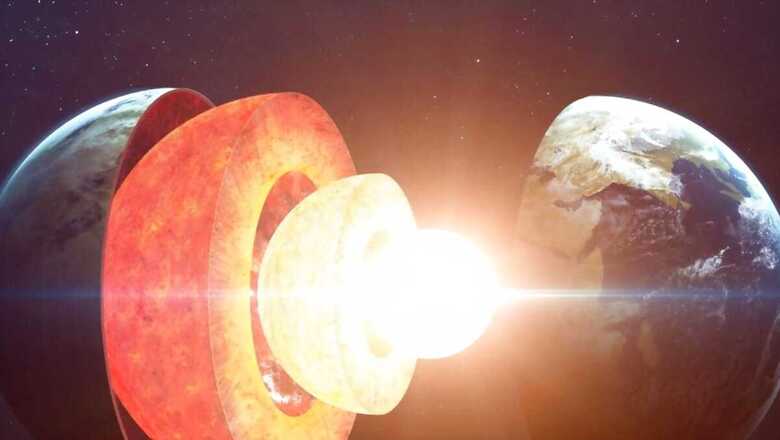
views
Approximately 2,890 kilometres beneath us lies an enormous ball of molten metal, which is our planet’s core, a new study has revealed. Scientists use the seismic waves created by earthquakes to see the shape and structure of the core. Using these waves, scientists have recently made a fascinating discovery of a ring-like structure within the swirling pool of molten metal.
Research published in the journal Science Advances has identified a large doughnut-shaped region within the outer core parallel to the equator, where seismic waves travel about 2 per cent slower than in the rest of the core.
Speaking on the same, study co-author and Australian National University geophysicist, Professor Hrvoje Tkalcic, claimed that it was not possible for scientists to reach the planet’s core using existing technology. So, the team relied on seismic waves, and they analysed the forms of seismic waves generated by large earthquakes as they travelled through the Earth, reported the Guardian.
Professor Hrvoje Tkalcic further added that the scientists compared the data generated by seismic detectors nearer to the poles with results from closer to the Equator. They found that the waves slowed down as they passed near the ceiling, before the mantle. “By understanding the geometry of the paths of the waves and how they traverse the outer core’s volume, we reconstructed their travel times through the Earth,” Tkalcic said.
He went on to say, “We realised that seismic waves slow down in the zone that mathematically is called a torus. To most people, this looked like a doughnut. Overall, the waves detected closer to the poles were travelling faster than those near the Equator.”
He stressed it was important to understand the outer core as it was responsible for the magnetic field, which protects Earth from the constant bombardment of charged particles from the sun.
Within the molten iron and nickel, currents move that act like a “giant dynamo,” which generates and sustains the Earth’s magnetic field.
Overall, the Earth’s core was slightly larger than Mars. “We can think of it as a planet within our own planet,” Tkalcic said.
“We don’t know the exact thickness of the doughnut, but we inferred that it reaches a few hundred kilometres beneath the core-mantle boundary,” he concluded.
The structure’s buoyancy suggested that it consists of lighter chemical elements such as oxygen, hydrogen, silicon, sulphur, or carbon, which play a crucial role in the vast currents of molten metal running through the core that generate Earth’s magnetic field.
Meanwhile, the Earth’s outer core has a radius of around 3,480 km, as per the National Geographic. This makes it slightly bigger than Mars. It consists mainly of iron and nickel, with some traces of lighter elements such as oxygen, sulphur, silicon, hydrogen, and carbon.




















Comments
0 comment